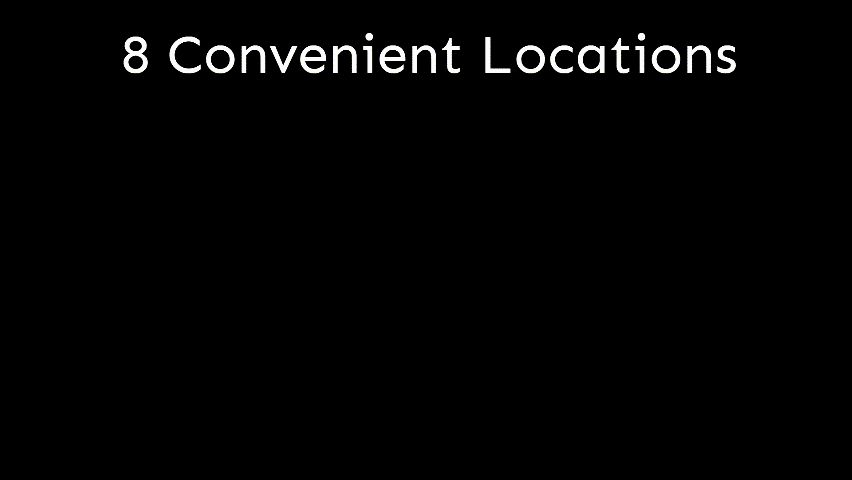Dupoy Oxygen isn't just a gas supplier—we’re a committed partner for welding, fabrication, manufacturing, and industrial operations across Central Texas. Over decades, we’ve built a reputation for dependable delivery, technical expertise, safety commitment, and local responsiveness. In this post, I’ll highlight how Dupoy Oxygen supports local industries with tailored gas services, reliability, supply chain resilience, training, and community investment.
A Local Presence with Regional Reach
Being based in Central Texas gives Dupoy Oxygen unique advantages:
-
Proximity enables rapid delivery to shops across Waco, Temple, Killeen, Bryan-College Station, and surrounding counties
-
Flexibility to respond to emergency needs, cylinder shortages, or last-minute orders
-
A deep understanding of local industry sectors—oil & gas, fabrication, agriculture, structural steel, heavy machinery—so we can tailor gas solutions accordingly
-
In-person technical support and consultation available without long wait times
Customized Gas Supply Programs
Every industry has its nuances. Our team works closely with customers to design gas supply programs that match their needs:
-
Scheduled deliveries / cylinder exchange programs to avoid downtime
-
Micro-bulk and bulk supply for high-usage installations, reducing handling and cost
-
On-site manifold systems for continuous flow to multiple weld stations
-
Emergency gas backup plans to prevent production halts
-
Inventory management and forecasting to smooth supply and reduce excess stock
Technical Support & Training
Gas alone isn’t enough—our value lies in expertise. Dupoy Oxygen assists clients through:
-
Process support: selecting proper gas mixes, flow rates, purity levels, shielding combinations
-
Troubleshooting: diagnosing weld quality issues linked to gas (flow instability, contamination, leaks)
-
Training: best practices in cylinder handling, purging, safety, and gas system maintenance
-
Safety audits: on-site reviews of cylinder layout, regulatory compliance, protective measures
Safety, Compliance & Quality Assurance
As an industrial gas supplier, we prioritize safety and regulatory compliance so you don’t have to shoulder it alone:
-
All cylinders from Dupoy are certified, inspected, and tested to DOT and CGA standards
-
Every fill is verified for purity, leak tightness, and documentation
-
We maintain comprehensive records and certificates to support your audits
-
We assist clients in meeting OSHA and industry standards for gas handling and storage
-
In emergency situations, we provide replacement cylinders or service to prevent shutdowns
Local Investment & Community Commitment
Supporting local industries means investing locally:
-
We employ local drivers, technicians, and customer support staff—supporting Central Texas employment
-
Our service vehicles, warehouses, and operations are located within the region, so we minimize delivery distances and response times
-
We often sponsor or partner with local trade schools, welding programs, or industry events to foster skill development and workforce growth
-
We maintain relationships with fabrication shops, structural steel companies, agricultural equipment manufacturers, and other industrial entities to stay aligned with their evolving needs
Case Example: Supporting a Central Texas Fabrication Shop
Let me illustrate how this works in real life. A heavy fabrication shop in the Waco area recently upgraded to a six-station welding cell using high-strength steels. They faced challenges: gas supply lag, weld inconsistency, and emergency downtime. Dupoy Oxygen stepped in—designing a manifold gas system to feed all stations, installing redundant microbulk backup, optimizing shielding gas blends for the new steels, and scheduling daily deliveries timed to their shift change. The result: fewer interruptions, lower scrap, and increased throughput.
Why Central Texas Industries Choose Dupoy Oxygen
-
Reliability: when your mill is down, every minute counts. We deliver.
-
Expertise: we don’t just drop cylinders—we advise.
-
Scalability: as your operations grow, we scale gas systems accordingly
-
Local support: real people on the ground who understand your challenges
-
Safety & compliance: we help you meet regulations and reduce risk
Partner with Dupoy Oxygen for Industrial Gases & Service
From welding shops to heavy fabrication plants, construction firms to repair shops, Dupoy Oxygen supports Central Texas industries with gas delivery, technical services, safety, and partnership. Whether you need specialty gas, manifold systems, purity guarantees, or emergency backup, we’re ready to serve you reliably and locally.
Contact Dupoy Oxygen today to establish a customized gas supply program, schedule on-site consultation, or arrange technical support. Let us help your operations run smoother, safer, and more cost-effectively.


